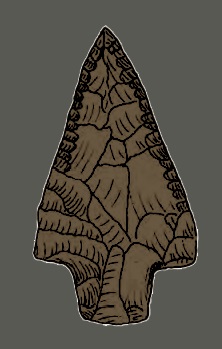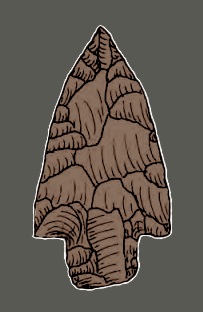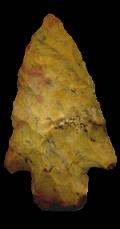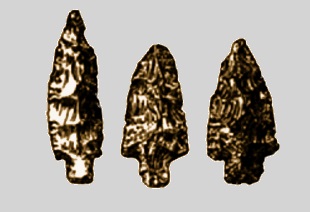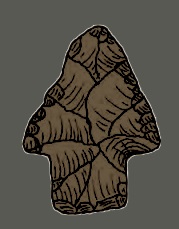Outline is Representative of Size and Shape:

Name Details:
Identified By: James A. Ford and Clarence H. Webb
Named For:
Date Identified: 1956
Type Site: Poverty Point, Louisiana
Identified By: James A. Ford and Clarence H. Webb
Named For:
Date Identified: 1956
Type Site: Poverty Point, Louisiana
Point Validity:
Valid type
Ford is an archaeologist who cataloged the cultures of the lower Mississippi River valley. He is most noted for conducting the first large scale excavation at Poverty Point. Webb was a trained Pediatrician who became interested in archeology. In 1940 he became the charter member of the Society of American Archeology. He conducted many collaborative excavations and conducted his own excavations at Poverty Point and Gahagan Mounds. He was a well-respected archaeologist. He named this point in a professional publication and this type has many professional references. This is a valid type.
Ford is an archaeologist who cataloged the cultures of the lower Mississippi River valley. He is most noted for conducting the first large scale excavation at Poverty Point. Webb was a trained Pediatrician who became interested in archeology. In 1940 he became the charter member of the Society of American Archeology. He conducted many collaborative excavations and conducted his own excavations at Poverty Point and Gahagan Mounds. He was a well-respected archaeologist. He named this point in a professional publication and this type has many professional references. This is a valid type.
Macon Stemmed
Cluster: Description of Physical Characteristics and Flaking Pattern:
This is a thick medium triangular stemmed point with an elliptical cross section. The blade may vary from excurvate to straight. The shoulders range from horizontal to having a slight barb. The stem is moderately long and rectangular with a straight stem and rounded basal edges. The base may vary from straight to slightly convex. Basal thinning is commonly present and basal grinding occasionally occurs. This point has a random flaking pattern.
Size Measurements:
Length - 40 to 67 mm (average 57 mm), Width - 27 to 36 mm (average 31 mm), Thickness 6 to 13 mm (average 9 mm).
Length - 40 to 67 mm (average 57 mm), Width - 27 to 36 mm (average 31 mm), Thickness 6 to 13 mm (average 9 mm).
Commonly Utilized Material:
Material is commonly imported in including Fort Payne chert, Blue / Gray Fort Payne, and Tallahatta Quartzite.
Material is commonly imported in including Fort Payne chert, Blue / Gray Fort Payne, and Tallahatta Quartzite.
Additional Comments:
Distribution: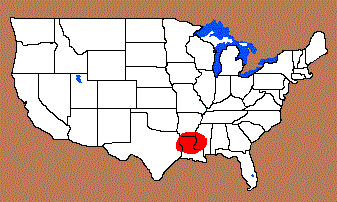
Distribution Comments:
This point is primarily found in northern Louisiana and onto southern Arkansas and western Mississippi in areas associated with the Poverty Point culture. This point has been reported into eastern Texas to the Fort Polk site.
This point is primarily found in northern Louisiana and onto southern Arkansas and western Mississippi in areas associated with the Poverty Point culture. This point has been reported into eastern Texas to the Fort Polk site.
Age / Periods:
Date: 3,500 - 2,500 B.P.
Cultural Period: Late Archaic to Early Woodland
Glacial Period: Neoglacial
Culture: Poverty Point Culture
Date: 3,500 - 2,500 B.P.
Cultural Period: Late Archaic to Early Woodland
Glacial Period: Neoglacial
Culture: Poverty Point Culture
Age Details:
Other points in this cluster / Related / Associated Points:

